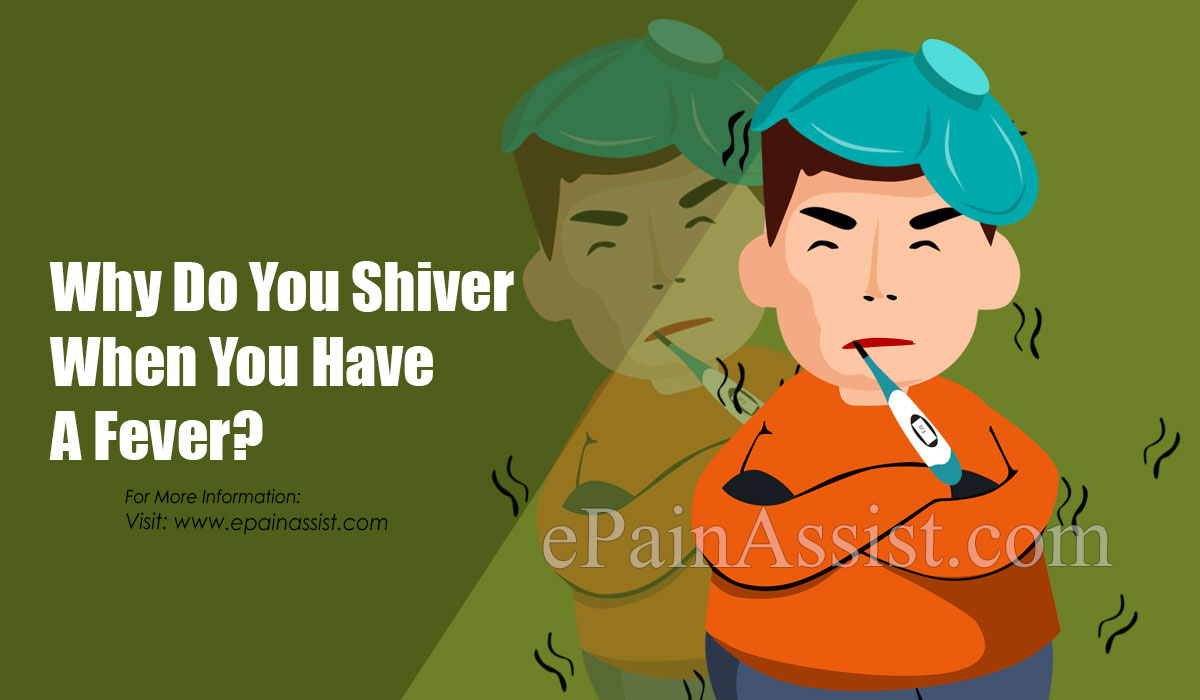Why Do You Shiver When You Have A Fever?
Shivering and chills is a common accompaniment of fever.(1) But, does anyone know why does this shivering with fever happen? This question can be answered as the body’s strange way of dealing with a viral or bacterial infection. Studies suggest that all viruses and bacteria are not able to easily multiply at higher temperatures. Thus, if an individual gets infected with a virus or bacteria, then the immune system of the body tends to increase the body temperature to prevent the microbes from multiplying.(2,3) It is believed that a rise in body temperature of just a couple of degrees can prevent the microbes from multiplying and growing.(3) When the temperature rises, the body tries to adjust to the higher temperature the individual starts feeling cold.(4) This results in the muscles contracting and relaxing trying to keep the body warm thereby causing shivers and chills.(4) This is the science behind shivering and feeling cold when having a fever.
It is believed that a rise in body temperature of just a couple of degrees can prevent the microbes from multiplying and growing.(3) When the temperature rises, the body tries to adjust to the higher temperature the individual starts feeling cold.(4) This results in the muscles contracting and relaxing trying to keep the body warm thereby causing shivers and chills.(4) This is the science behind shivering and feeling cold when having a fever.
What are The Causes of Fever & Shivering?
The duration of fever and shivering is variable and depends on the underlying cause. Influenza is the most common cause of fever along with ear and sinus infections which causes fever and chills.(5) Certain medical conditions like pneumonia, bronchitis, meningitis and gastroenteritis also cause fever and chills.(6)
Some of the more serious causes of fever can be Crohn Disease, cancer or clots. There are also certain vaccinations that can spike fever, especially in children along with shivering. In cases of viral infections, the fever along with shivers and chills may last for a few days; whereas in more serious conditions, it may take quite a few weeks for the fever to go away.
What Helps Fever And Chills?
Normally, fever caused due to common infections can be treated with over the counter antipyretics. Cold compresses on the forehead also help in bringing down the body temperature.(7,8) In case if the fever does not come down with standard procedures and home remedies, then a consultation with a physician is needed to determine the cause of the fever.
A consultation is required especially if there is associated difficulty breathing along with body pains, muscle aches, pain in the abdomen, break out of rashes, and extremely lethargy. Physician consultation is also required if the fever and shivering does not go down even post treatment even after three or four days. If a known underlying medical condition is causing fever, then that also needs to be addressed by a physician to determine the appropriate treatment plan for the patient. In case of children and infants a visit to the nearest emergency room is required if the following occurs:
- Fever above 101 degrees Fahrenheit.
- The child appears confused and is always sleeping.
- The child is not able to move a hand or a leg.
- The child experiences a bout of seizure.
- Has problems breathing, finds it difficult to move the neck and complains of severe headache.
Other than the above, the shivers and chills that accompany fever can be taken care of by just rest, keeping hydrated, and take over the counter Tylenol. These measures are good enough to not only take care of fever, but also chills and shivers that come with it.
- https://www.ncbi.nlm.nih.gov/books/NBK324/
- https://www.ncbi.nlm.nih.gov/books/NBK26917/
- https://www.ncbi.nlm.nih.gov/books/NBK507838/
- https://medlineplus.gov/ency/article/003091.htm
- https://www.ncbi.nlm.nih.gov/pmc/articles/PMC5197931/
- https://medlineplus.gov/ency/article/003090.htm
- http://www.picsolution.com/en/advice/some-tips-for-you/reduce-fever-5-secrets-to-getting-it-down.html
- https://www.medicalnewstoday.com/articles/321950.php
Also Read:
- What is Q Fever: Treatment, Recovery, Signs, Symptoms, Causes, Prevention, Epidemiology
- What is Traveler’s Fever, Know its Symptoms, Causes
- Acute Fever: Causes, Symptoms, Treatments, Diagnosis
- What is Yellow Fever, Know its Causes, Symptoms, Treatment, Prognosis
- African Tick Bite Fever: Causes, Symptoms, Treatment, Precautions, Diagnosis, Who is at Risk
- What is Hay Fever, Know its Causes, Symptoms, Treatment, Prevention, Pathophysiology, Risk Factors
- What is Rocky Mountain Spotted Fever: Causes, Symptoms, Treatment, Diagnosis
